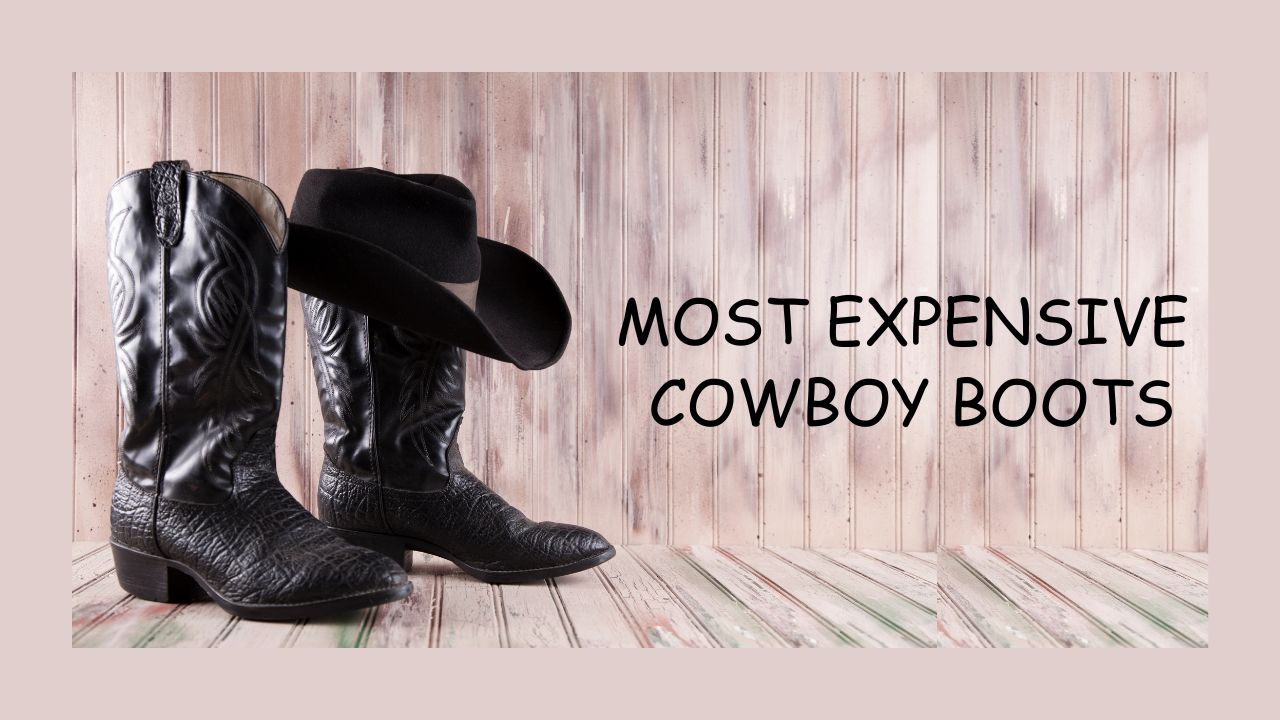Top 10 Most Expensive Swords In The World
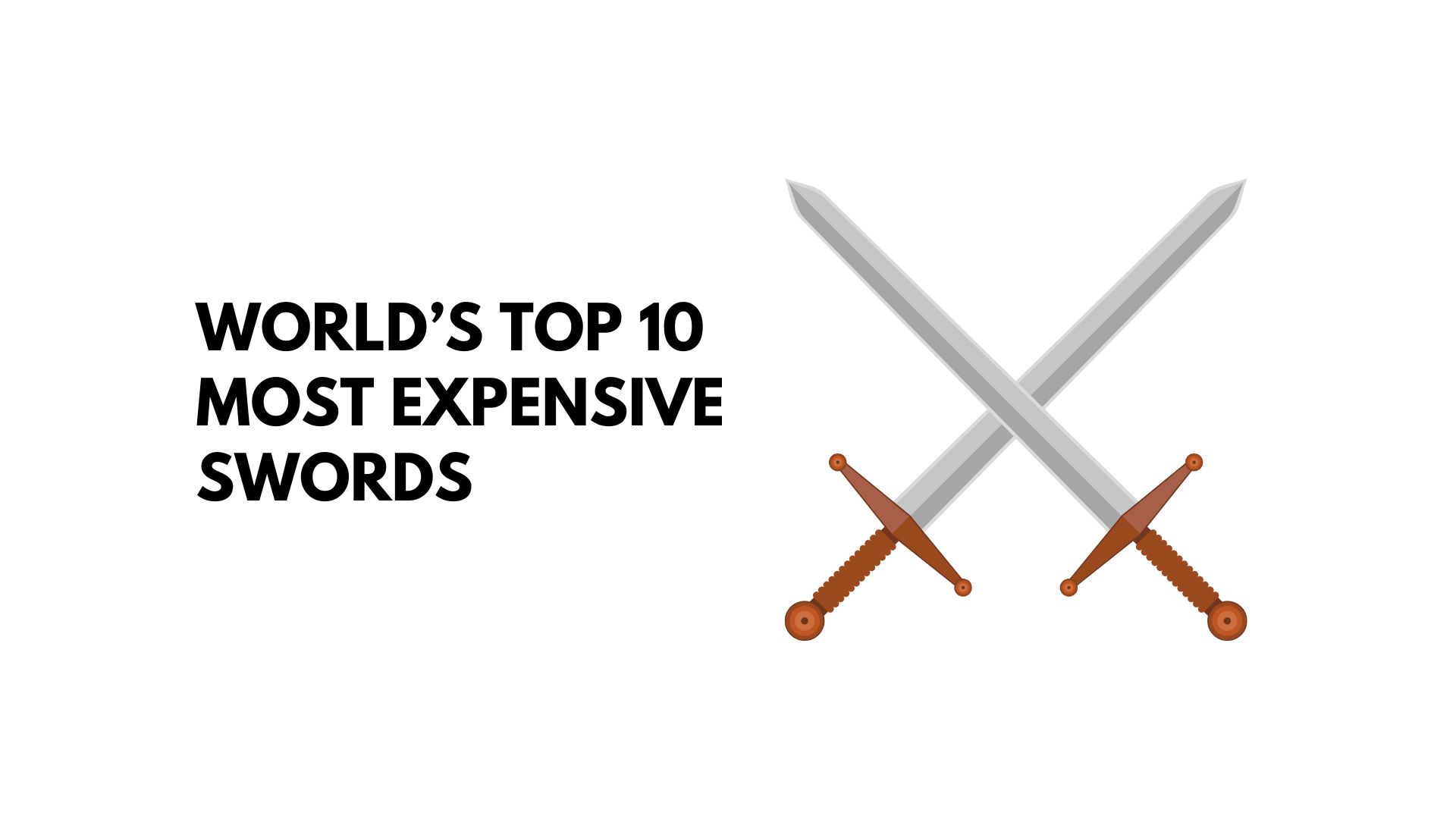
Page Contents
Most Expensive Swords – A lengthy piece of armor called a sword can be utilized for ripping, thrusting, and gashing. Daggers have been used by humans for hundreds of years, and they still serve a vital function in conflict, tonality, and innovative celebrations. Blades are accessible in several forms and dimensions, ranging from the small Roman gladius to the longer, curved Japanese katana. Despite exquisite patterning and embellishments covering the edge and bow, the skill of creating daggers has also been maintained as a prominent artistic expression. In the meantime, daggers are primarily used mostly for useful purposes or as a game, similar to fighting. This article with provide the ancient history of Swords as well as the World’s Top 10 Most expensive swords.
History of Swords
The evolution of weapons spans thousands of years, with the latest confirmed examples arriving during the Paleozoic era. These swords were usually constructed of citation, a fluid material that has been simple to interact with while being pliable and bendable. Weapons crafted from iron or steel, which have been tough and more resilient, started to just be constructed as metallurgical developed.
Many ancient nations, including Egypt, Greece, Rome, and China, adopted daggers. Within both combat and in more formal roles, they became extensively used as signs of authority and rank. A long, linear-bladed weapon for use by warriors in combat, the legendary chivalry sword originated in Europe during the Middle Ages.
The samurai sword, often recognized as the katana, has become the signature hallmark of the warrior class in Japan, the legionary aristocracy of ancient Japan. The samurai was a single-whitened, curved dagger recognized for its ruthlessness and cutting power. Since Japanese swordsmiths routed algorithms for their components and developed detailed embellishments on the edge, it was possible to pinpoint the producer among these armaments.
Katana produced during the Medieval were less sophisticated and aesthetic, with exquisite bow patterns and durable products like gold and rocks being incorporated into their manufacture. Yet, as weaponry progressed in the 16th century, the application of daggers in warfare reduced and they progressively became a customary or aesthetic commodity. Currently, daggers are mostly utilized in combat sports like Aikido and fighting. They are indeed treasured and cherished for their metaphorical and artistic value. A handful of craftsmen from every part of the world still engage in the craft of weapon manufacturing, generating lofty-caliber weapons with the aid of age-old methods and implements.
Types of Swords
- Katana
- Rapier
- Longwood
- Gladius
- Machete
- Claymore
- Saber
- Jian etc
Uses of Swords
- They are used in wars
- Most people use them as self-defense
- Many of the swords are sports equipment used in fencing or kendo
- Many of the historical swords are used as artifacts they are kept as display and many have an interest in collecting and preserving them.
- Many swords are even used for ceremonial purposes like weddings or any other religious rituals.
Though in today’s culture swords aren't used as much as advanced technology has come up still few preserve swords as an artifact. They are kept in museums for display.
Top 10 Most Expensive Swords In The World
- 18th-century Boateng Saber – (WorthUSD 7.7 Million)
- Napolean Bonaparte’s Gold-Encrusted Dagger – (Worth USD 6.3 Million)
- 15th-century Nassrid Period Ear-sword – (Worth USD 6 Million)
- Shah Jahan’s Personal Sword – (Worth USD 3.3 Million)
- The Gem of the Orient Knife – (Worth USD 2.1 Million)
- Ulysses S Grant’s Civil War Presentation Dagger – (Worth USD 1.6 Million)
- Qianlong Imperial Haunting Dagger – (Worth USD 1.24 Million
- 17th-century Indian Talwar Blade – (Worth USD 717,800)
- Admiral Lord Nelson’s French Officer Dagger – (Worth USD 514,720)
- 13th-century Kamakura Japanese Katana – (Worth USD 418,000)
#1. 18th-century Boateng Saber – (WorthUSD 7.7 Million)
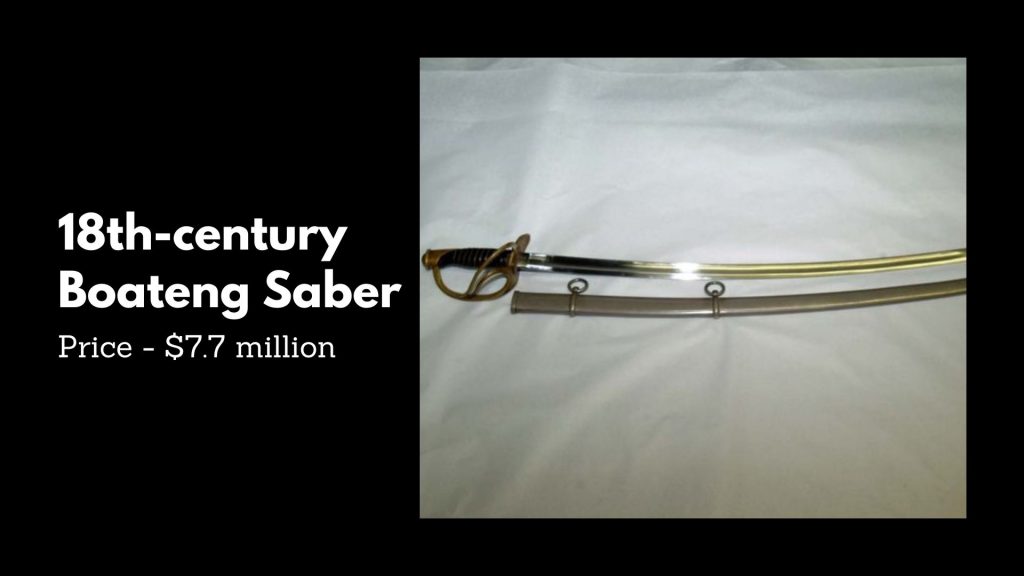
The Boateng smallsword of the 18th century was prevalent among some of the Boateng indigenous to West Africa. It was titled well after Boateng, a strong and influential ethnic community that inhabited the area at that point.
The Boateng smallsword was characterized by its lengthy, curved blade, which was frequently fashioned from lofty-caliber swords. The blade was probably heavily carved with complicated designs and markings, while the shaft was constructed of timber or another material. The Boateng troops used the smallsword in the war in addition to its other uses. The Boateng smallsword was considered valuable for its toughness and dependability, and it was considered to be a sign of authority and dignity among Boateng. It was additionally utilized as a bargaining tool since the Boateng were considered to be skilled merchants as well as negotiators. Despite its widespread use, the Boateng smallsword went out of vogue as new ammunition was readily accessible throughout the region.
#2. Napolean Bonaparte’s Gold-Encrusted Dagger – (Worth USD 6.3 Million)
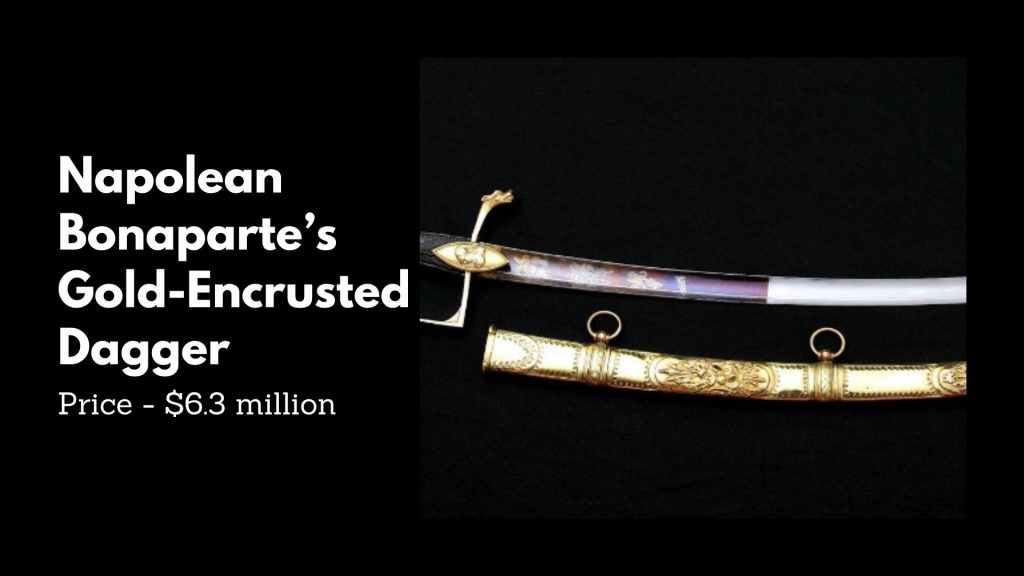
The dagger of Napoleon Bonaparte was utilized during the War of Marengo. prestigious and important blade in human civilization's history, the blade is a curved sword. aesthetically exquisite product ever developed, the blade is easily drawn and regularly adopted by many others. This armor's grip and case have both been composed of gold.
Napoleon, a belongs to the class commander, owned the sword and utilized the armor during the War of Marengo in 1800 before his accession as French monarch. Being the foremost successful franchise, it brought 6.3 million bones to market.
#3. 15th-century Nassrid Period Ear-sword – (Worth USD 6 Million)
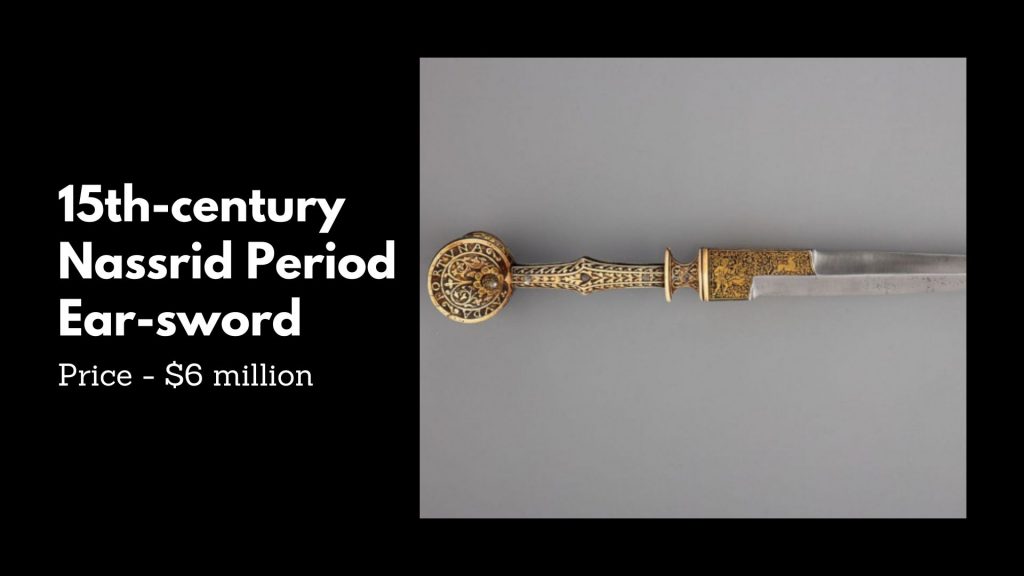
Its sword's beginnings can be attributed to North Africa's Timurid era. It has earned recognition for its successful contribution to the Nasrid era. It was among the most frequently applied arms at the age. Before being acknowledged by the Brits, the Spanish developed the use of the Nasrid period observational blade throughout the fifteenth and sixteenth centuries.
The entire size of this dual-sided steel saber is 350 mm, and its total duration is 210 mm. It is among the most valued blades ever crafted, despite being a short and slender edge. It was purchased for 6 million bones at the bidding.
#4. Shah Jahan’s Personal Sword – (Worth USD 3.3 Million)
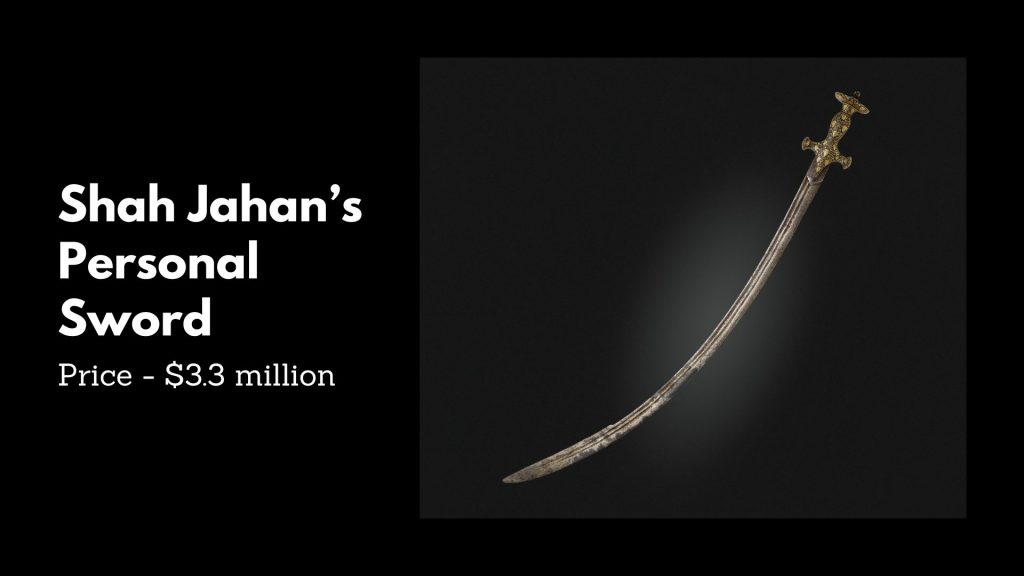
The katana was, as its title suggests, the unique armor of Emperor Shah Jahan, the fifth Roman emperor, who lasted throughout 1628 as well as 1658. The armament is awarded the Monarch's designation and title, which verifies his ownership in antiquity. In 1630, the blade was created as a surprise for Sultan's 39th birthday.
Shah Jahan's daggers can indeed be excluded from the list of the most priceless blades ever given that it was sold at Bonham for 3.3 million bones. According to the purchaser's identity of being commemorated without really being baptized, the seller of the armour is unidentified.
#5. The Gem of the Orient Knife – (Worth USD 2.1 Million)
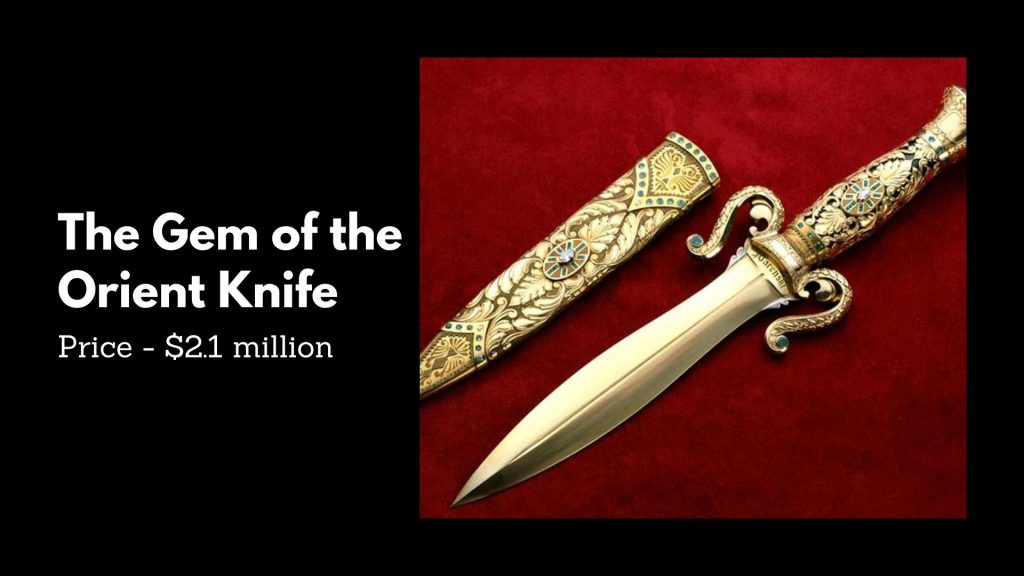
Credits are given to Buster Warenski for designing this armor. Whenever the artisan created a copy of King Tut's dagger, he left an impressive impression. He runs a dagger workshop, and his obligation seemed to be to make knives for plenty of other people. Buster needed ten shots to finish his blade.
The Gem of the Orient approximately costs 2.1 million bones and is currently ranked fifth on the top ten list of the most priceless daggers in mankind's life. The blade initially cost 1.2 million bones, yet it is currently being sold for the best rate. The armor is now more akin to something like a cutter, yet it's also capable of serving as a blade. The slicer has a heedless grip that weighs 28 ounces as well as a blade that is similar to a Damascus dagger. The armor, which is composed of 10 karat gold, 153 sapphires, and 9 gems of 5 karats, is recognized for being the most powerful cutter in humanity.
#6. Ulysses S Grant’s Civil War Presentation Dagger – (Worth USD 1.6 Million)
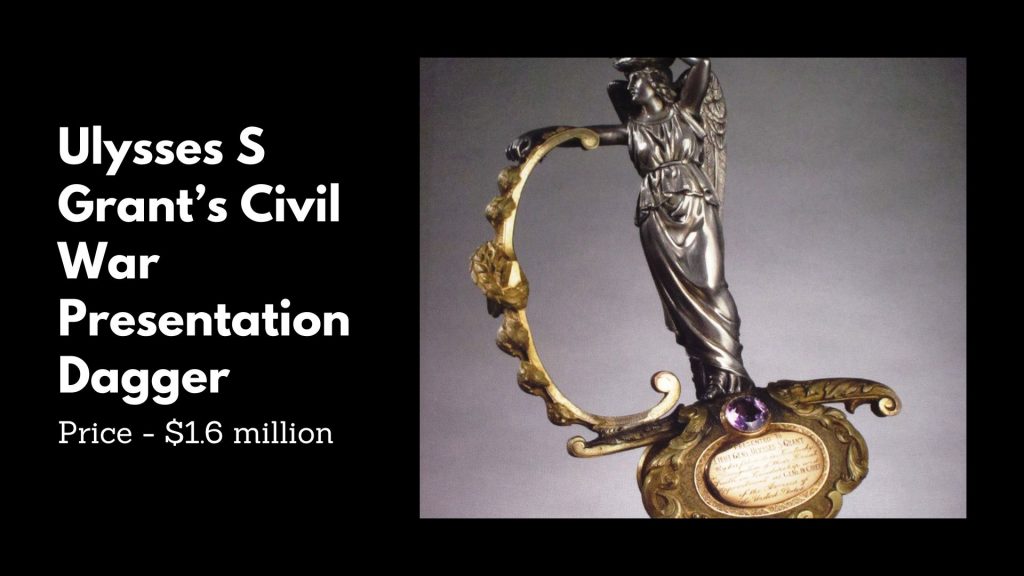
Considering the contrasting General Ulysses S. Grant's dagger to the creation of the katana, it is still super young. With a Sword that has been utilized since the twelfth and thirteenth centuries, it can't be reconciled. Ulysses Grant, the 18th founder of the Us, was the possessor of the katana.
When he served as the Commanding Chief of the United States, he seemed to have the armaments. He acknowledged that the blade may have been utilized during the American Civil War. The dagger fetched 1.6 million bones when it was initially purchased.
26 gems were employed to adorn the logo, creating the host's letters.
U.S.G. All across the majority of its production, the communique used gold and silverware to manufacture this weapon. As such, it depicts an American hawk.
#7. Qianlong Imperial Haunting Dagger – (Worth USD 1.24 Million)
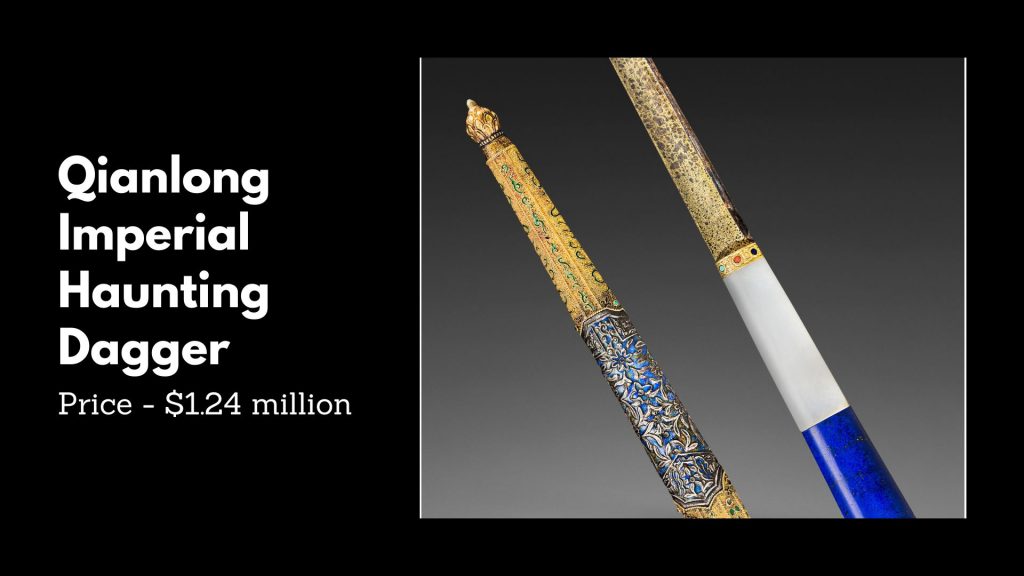
This extended blade armor is also capable of being started bawling with just a knife. The armor is a chasing cutter, as its title implies, and it belongs to Emperor Qianlong, the sixth emperor of the Manchu-led Qing empire. The dagger may have been employed as a chasing weapon by the monarch.
The truth that the saber is made of extremely pricey materials reveals why and how it ranks as one of the most prized weapons in recorded existence. The grasp of the weapon, which is crafted of precious metals, was constructed using gazelle cornucopias.
The notion that this weapon includes concealed compartments where skewers can be placed is also another unique feature. This distinctive feature separates the armament from those other chasing blades. The dagger was sold in 2009 at $1.24M
#8. 17th-century Indian Talwar Blade – (Worth USD 717,800)
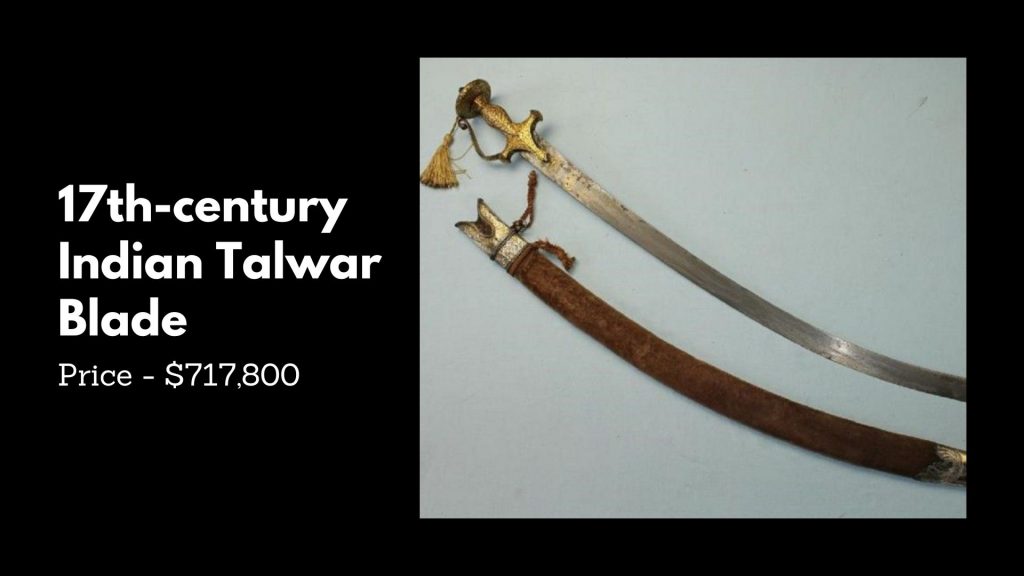
The chronology of the dagger starts in the late 1700s. It was authored in 1637 or 1638 by Shah Jahan, the Roman Emperor.
Due to its convoluted shape, numerous humans mistake this blade for a katana, yet they have distinct differences but were invented in separate periods. The Mughal Emperor Shah Jahan's Indian Ceptor is embroidered with gold patches. As part of his artistic endeavors, it also features engraved gold apocryphal writings.
The dagger, which brings almost a million bones, cannot be overlooked from either the list of the ten most priceless blades ever. The Dagger was first estimated just to be auctioned for at least 60,000 pounds. Nevertheless, the dagger was acquired for a tiny amount of money.
#9. Admiral Lord Nelson’s French Officer Dagger – (Worth USD 514,720)
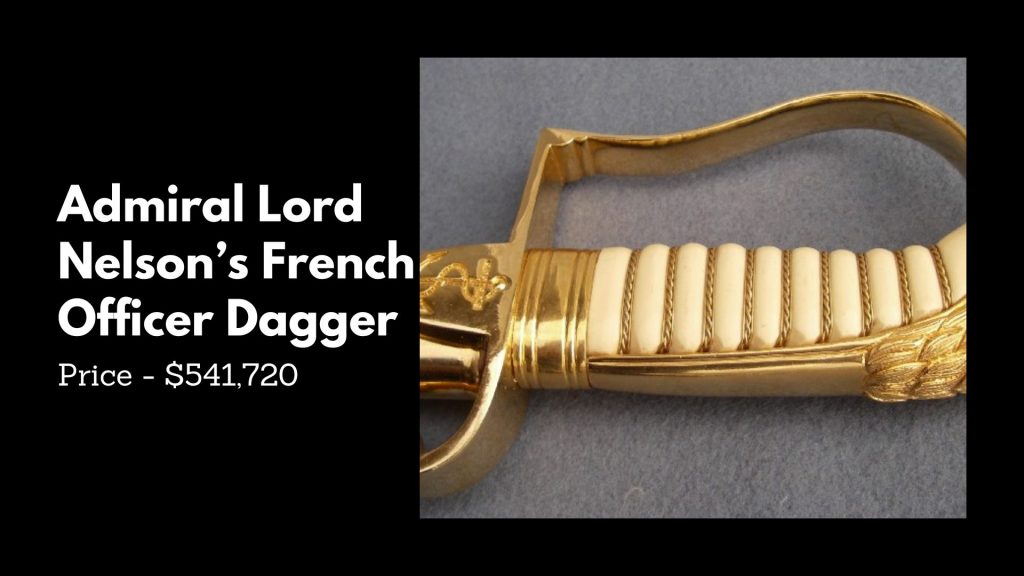
Horatio Nelson, widely recognized as Captain Nelson in contemporary culture, owned it, as even the term suggests. Admiral Nelson operated as the flag officer of the British Royal Navy throughout his administration. The weapon became one of the costliest daggers ever purchased by a human being, raking in $514,720 in bones throughout an event in 2002.
The weapon's grip simulates ivory, as well as its edge is made of a carbon-based spring razor. Even though the dagger is 32.5, the apex is 39.5. Admiral Lord Nelson's War of Trafalgar Dagger, along with orders, diamonds, and paperwork, was rediscovered in 2001 at the bottom of a closed box held by Nelson's companion and has since become a genuinely noteworthy artifact.
#10. 13th-century Kamakura Japanese Katana – (Worth USD 418,000)
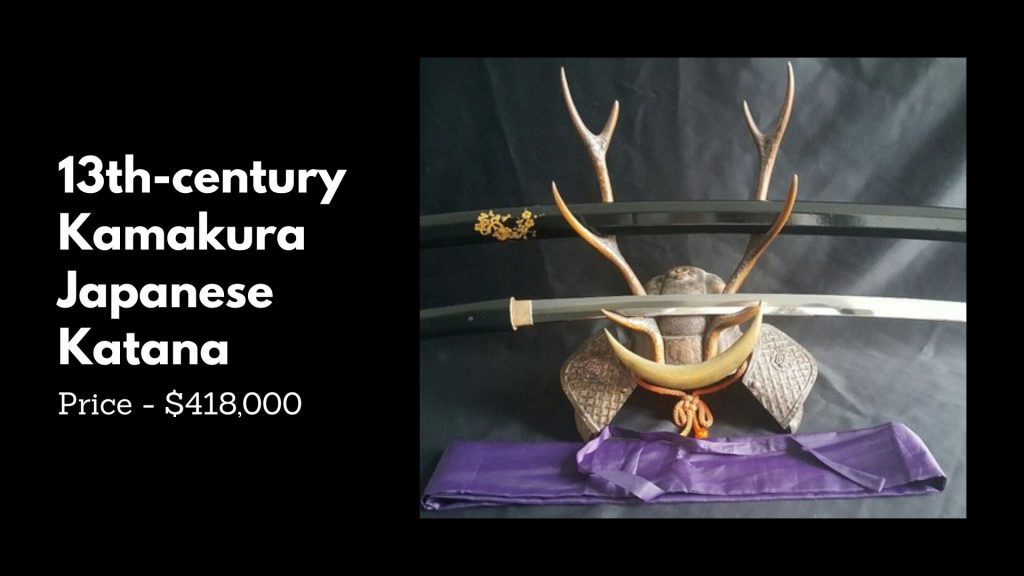
The Japanese samurai ranks among the most beloved daggers ever. The Kamakura Katana, a Japanese Samurai sword variety from the 1300s, ranks among the most magnificent blades in recorded existence thanks to its astonishingly pricey blades.
The sinewy Japanese Samurai used the Katana, a longsword with a single-edged, curved edge, in the 1300s. It was wonderfully made from trendy embellishments, which renders it strong and efficient in warfare. The dagger became definitive at a certain period in Japanese history, and the feudal kingdoms' kin used it primarily in times of struggle.
Bottom Line
Most enthusiasts, suckers, and entrepreneurs chase after priceless katana. These daggers may be encrusted with expensive ingredients and crystals, exquisite decorations, and distinctive characteristics. They are sometimes created by skilled laborers utilizing conventional methods. An overpriced dagger's worth might shift dramatically depending on variables like its novelty, desired use, as well as maintenance.
Ancient Japanese katanas, European longswords, and reconstructions of legendary daggers from art and entertainment are among the greatest premium daggers ever auctioned. These blades can cost several thousand, though not millions, of bucks.
Even though most individuals can not afford pricey weapons, they are appreciated for their enchantress and artisan and continued to have artistic as well as metaphorical significance. They are an annual reminder of the important contribution that daggers have had in the past to the human race and indeed the attractiveness of traditional enchanters.

Aditi is an Industry Analyst at Enterprise Apps Today and specializes in statistical analysis, survey research and content writing services. She currently writes articles related to the "most expensive" category.
